The Gift of South Dakota
Subscriptions to South Dakota Magazine make great gifts!
Subscribe today — 1 year (6 issues) is just $29!
We Winter With Eagles
Dec 15, 2020
Eagles were a rare sight in South Dakota just decades ago. The pesticide DDT got in their food (fish) chain and decreased the birds’ fertility. Then, 522,000 acres of their favorite habitat along the Missouri River was flooded by the Corps of Engineers’ six big dams. Eagle sightings became rare.
I was working for the Madison Daily Leader in 1975 when a bald eagle showed up on a sunny morning and perched in a tall tree near Lake Madison, just east of town. Word spread, and by midday there was a steady parade of cars to the tree, where the big baldy patiently sat tall like a kindly king on a wooden throne.
That was just a few years after DDT was banned. As the eagles repopulated they discovered that the tailwaters of those big Missouri River dams were excellent places to winter because the constant discharges kept the water open even on the coldest days of January and February.
While eagles might be seen in any of our 66 counties, as winter deepens and most rivers and lakes freeze they now concentrate along those downstream waters. They roost in the tallest cottonwood trees, sunning themselves on brisk mornings and enjoying the surroundings.
As the sun warms the air, they will leave their perches to “float" on the thermals that develop. While it may appear that they are just at play in the sunshine, it’s likely they are also keeping watch for fish doing the very same thing in the river below.
Watch as they drop into a slow and deliberate glide to the river’s surface, talons outstretched like the wheels of an airplane. Usually they grab the fish in a graceful swoop, but no species is perfect; sometimes they take on too big of a fish and the ascent is less graceful. A few years ago, some Yanktonians were confused to find a large carp lying on a sidewalk a few blocks from the river. Apparently, one of the local eagles tackled a fish bigger than he could carry and dropped it on the sidewalk.
The noble birds are adapting to living near humans. Particularly in Yankton and Pierre, they roost in cottonwoods or other large trees in parks along the river, watching parka-clad pedestrians on the paths below. Still, it’s best to keep your distance. They may be napping or fishing, and it’s not nice to interrupt in either case.
Here are tips on eagle watching along South Dakota’s four dams, from south to north.
Gavins Point at Yankton — Eagles now nest here year-around, but 100 or so “snowbirds” arrive every December. As other waters freeze, they concentrate along the river from the dam and into the city of Yankton where they can be seen on treetops in Riverside Park. Grab lunch or a hot chocolate at several diners near Levee Street and then walk along the river or across the Meridian Bridge. If the birds aren’t in town, head west on Highway 52 and take any of the roads south to the river. Sisters Grove, a nature area just below Chalkstone Hill, is a good place to see deer. The forested areas just east of the dam are particularly good spots to look.
Fort Randall Dam by Pickstown — A top spot is the campground and recreation area on the west side of the dam. A 780-acre eagle refuge, created decades ago when the birds were on the endangered species list, is closed to the public. A few years ago, a strange carp kill caused a smorgasbord of carp for the eagles (see the unique photo by Michael Zimny). Generally, the “baldies" have to work harder for their lunch. Check out the remains of the old chalkstone chapel and the historic fort cemetery, all within a mile or so of the river.
Big Bend at Fort Thompson — Visit an area locals call “the Teardrop,” a recreation and campground complex on the west side of the dam. But like other tailwaters, the birds might be found anywhere. You might also find the Crow Creek tribe’s buffalo herd grazing a few miles north of Fort Thompson on Highway 47.
Oahe Dam above Pierre — Oahe Downstream, the campground area just below our biggest dam, is an excellent spot. However, the big birds also like to visit our state capitol in winter. Take a walk in Steamboat Park, which borders the Missouri, stroll forested LaFramboise Island or cross the river to old Fort Pierre and look for the birds in Fischer's Lily Park, at the mouth of the Bad River. The park marks the spot where explorers Lewis & Clark had their first encounter with the Lakota people.


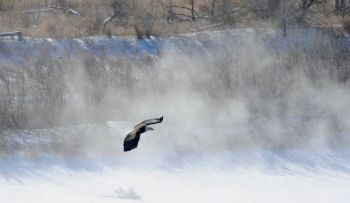
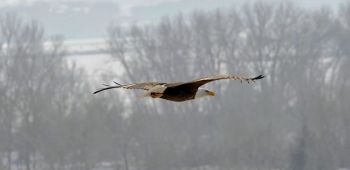
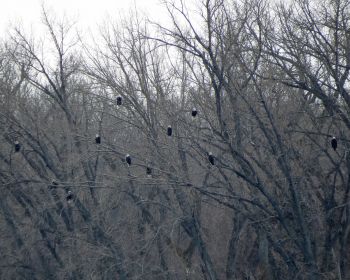
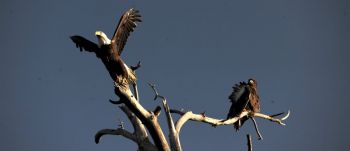
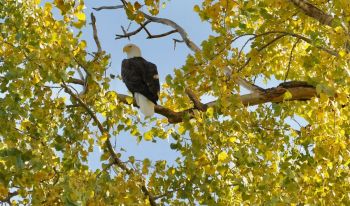
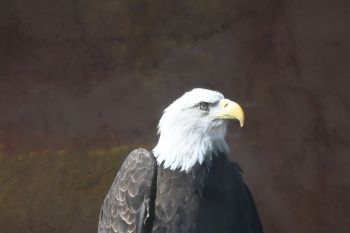

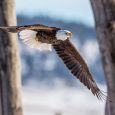
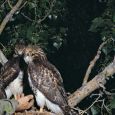

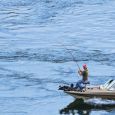
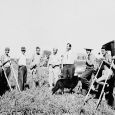
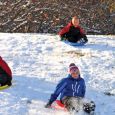

Comments